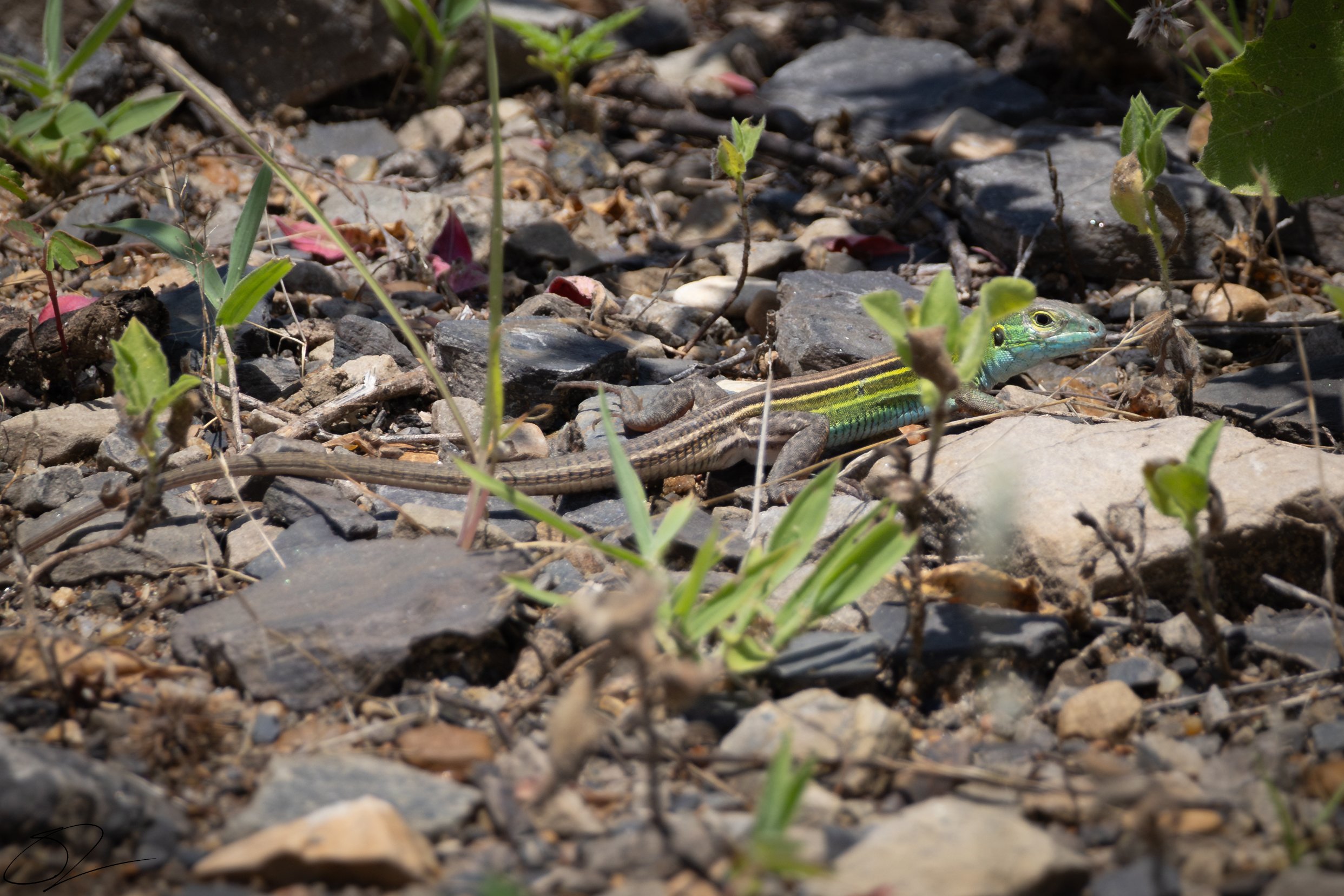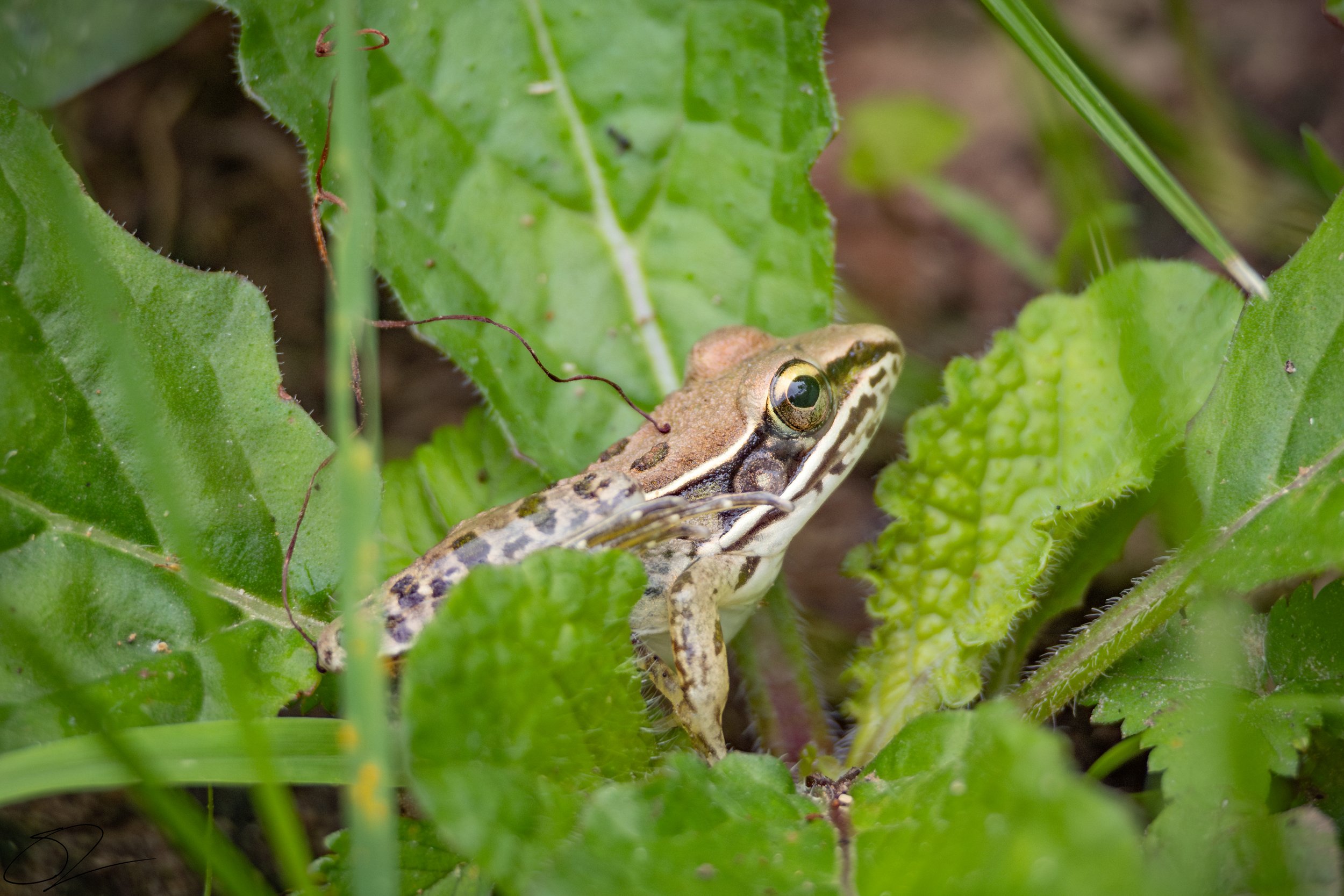
Reptiles and Amphibians
Different species of reptile and amphibians in the natural state.
This media is added along with some species detail. For me I never focus on trying to locate them. They are more of a surprise encounter that is always something new, fun, and interesting to see how they interact with the environments they live in.

Prairie Racerunner ~ Fast lizard with seven bright colored stripes. Adult males are heavily awash in bright green, with lesser amounts of blues and yellows. They have a bluish-tinted belly and chin. Adult females and juveniles are less awash in bright coloration and have a tan belly and chin.

Southern Leopard Frog ~ Frog with Green highlights and irregular black spots, and two white strips down their back. They have a chuckling quacking croak.

Cottonmouth Snake ~ The Cottonmouth Snake (Agkistrodon piscivorus), also known as a water moccasin, is a venomous pit viper native to the southeastern United States. It is semi-aquatic, commonly found in swamps, marshes, and near bodies of water. Cottonmouths are known for their thick, muscular bodies, dark coloration, and distinctive white mouth lining, which they display as a warning when threatened. They can grow up to 4 feet long and prey on fish, amphibians, and small mammals. While their venom is potent, cottonmouths are generally not aggressive unless provoked.

Red-Eared Slider ~ A semi-aquatic turtle native to the southern United States but widely found worldwide due to its popularity as a pet. It is easily identified by the distinctive red stripe behind each eye and its greenish shell with yellow markings. Red-eared sliders thrive in ponds, lakes, and slow-moving rivers, often seen basking on logs or rocks. They are omnivorous, feeding on plants, insects, and small aquatic animals. Known for their hardiness and adaptability, red-eared sliders are considered an invasive species in some regions due to their impact on local ecosystems.

Eastern Fence Lizard ~ (Sceloporus undulatus) is a medium-sized, spiny lizard commonly found in woodlands, grasslands, and rocky areas across the eastern United States. It has rough, grayish-brown scales with dark, wavy patterns that provide excellent camouflage. Males display bright blue patches on their throats and bellies during the breeding season. These agile climbers and sun-loving reptiles feed on insects, spiders, and other small invertebrates. When threatened, they rely on speed and their ability to blend into their surroundings to escape predators. Eastern fence lizards play a crucial role in controlling insect populations in their habitats.